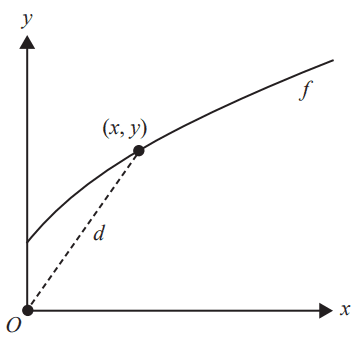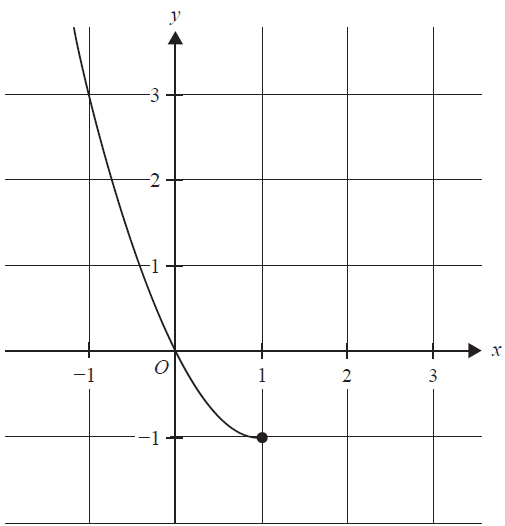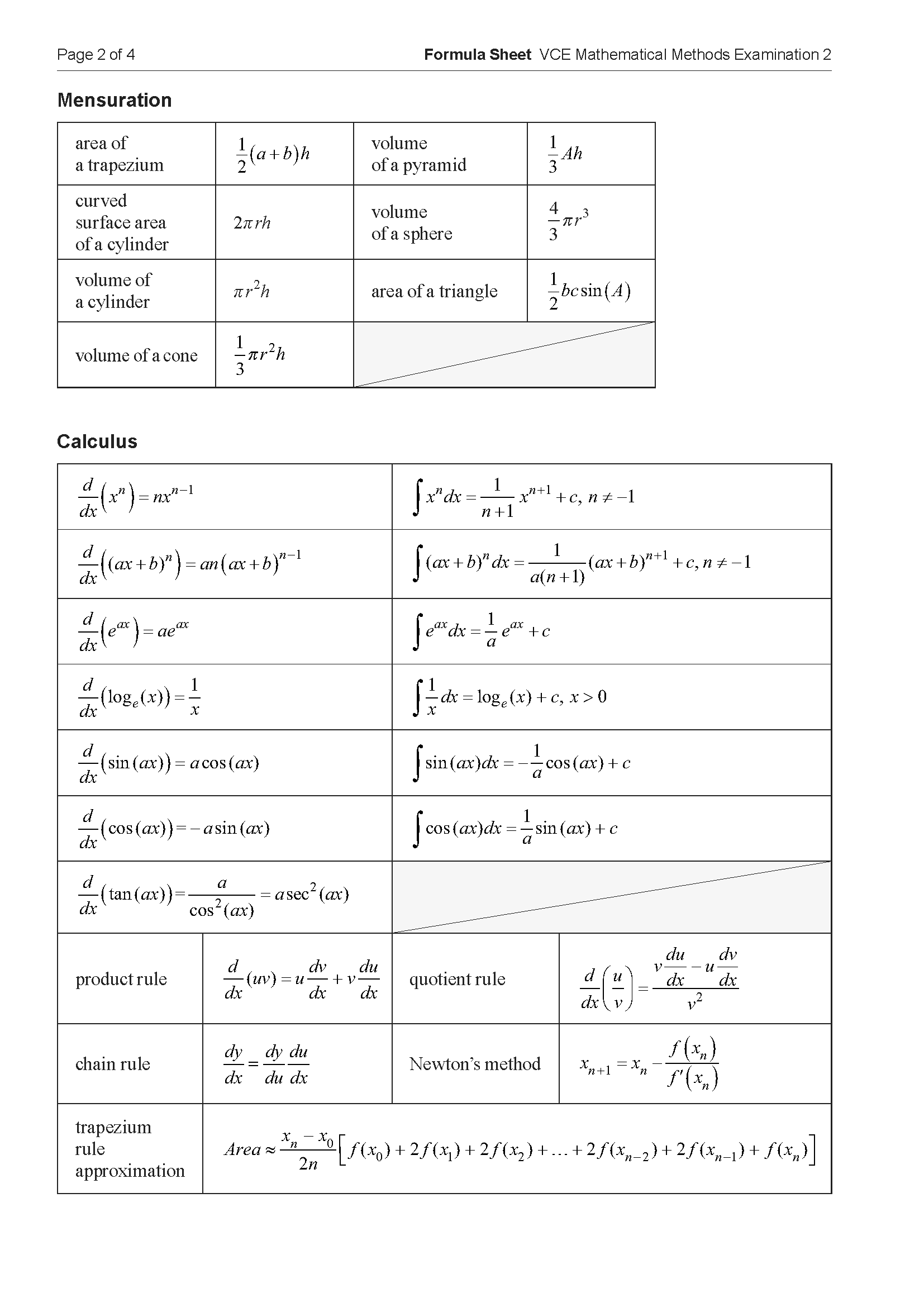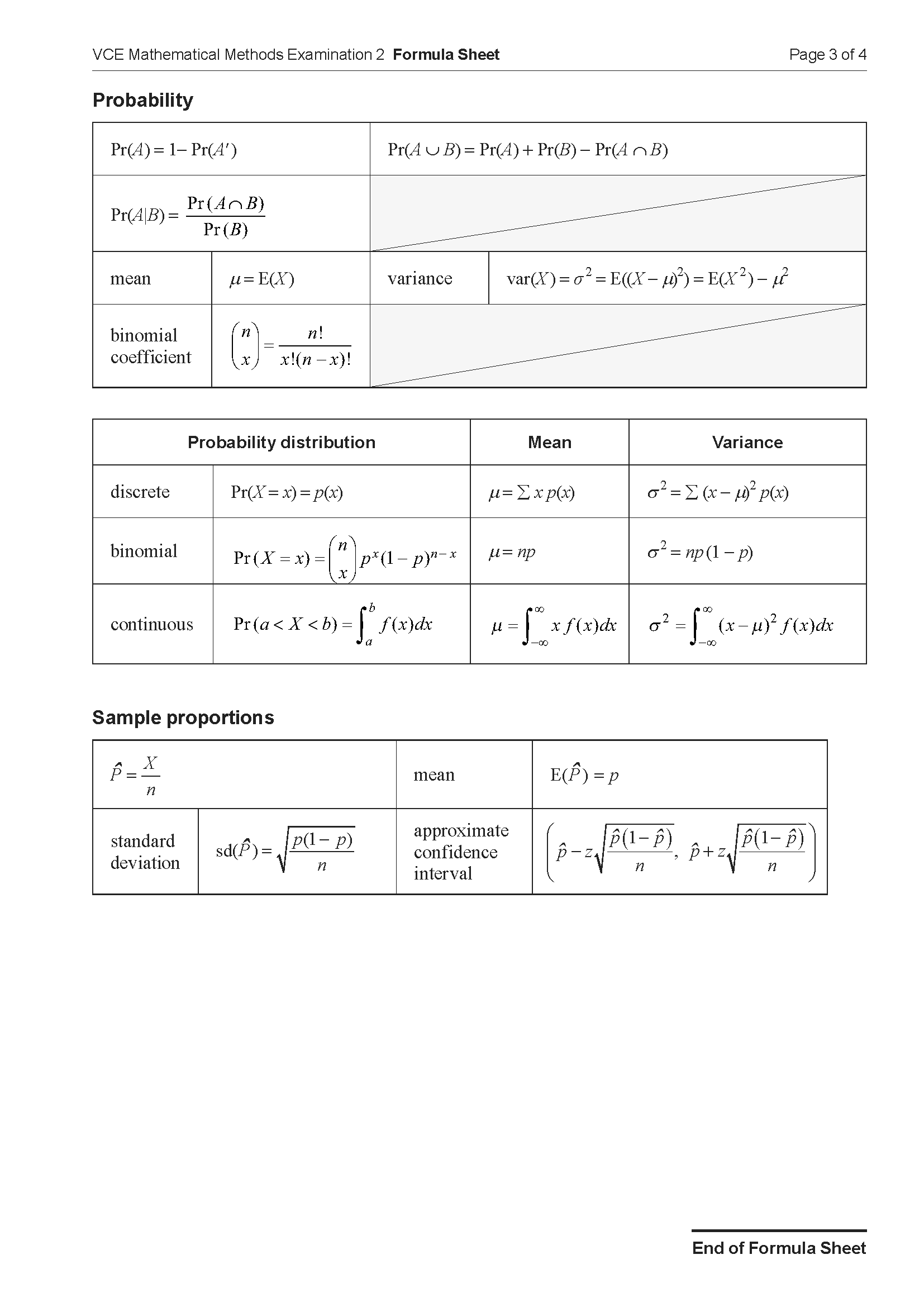VCE Maths Methods Functions Mini Test 3
Number of marks: 10
Reading time: 2 minutes
Writing time: 15 minutes
Section A – Calculator Allowed
Instructions
• Answer all questions in pencil on your Multiple-Choice Answer Sheet.
• Choose the response that is correct for the question.
• A correct answer scores 1; an incorrect answer scores 0.
• Marks will not be deducted for incorrect answers.
• No marks will be given if more than one answer is completed for any question.
• Unless otherwise indicated, the diagrams in this book are not drawn to scale.
The largest value of \( a \) such that the function \( f : (-\infty, a] \to \mathbb{R}, f(x) = x^2 + 3x - 10 \), where \( f \) is one-to-one, is
- A. –12.25
- B. –5
- C. –1.5
- D. 0
- E. 2
Which of the pairs of functions below are not inverse functions?
- A. \( \begin{cases} f(x) = 5x + 3 \quad x \in \mathbb{R} \\ g(x) = \frac{x - 3}{5} \quad x \in \mathbb{R} \end{cases} \)
- B. \( \begin{cases} f(x) = \frac{2}{3}x + 2 \quad x \in \mathbb{R} \\ g(x) = \frac{3}{2}x - 3 \quad x \in \mathbb{R} \end{cases} \)
- C. \( \begin{cases} f(x) = x^2 \quad x < 0 \\ g(x) = \sqrt{x} \quad x > 0 \end{cases} \)
- D. \( \begin{cases} f(x) = \frac{1}{x} \quad x \ne 0 \\ g(x) = \frac{1}{x} \quad x \ne 0 \end{cases} \)
- E. \( \begin{cases} f(x) = \log_e(x) + 1 \quad x > 0 \\ g(x) = e^{x - 1} \quad x \in \mathbb{R} \end{cases} \)

Let \( f : [0, \infty) \to \mathbb{R}, \ f(x) = \sqrt{2x + 1} \).
The shortest distance, \( d \), from the origin to the point \( (x, y) \) on the graph of \( f \) is given by
- A. \( d = x^2 + 2x + 1 \)
- B. \( d = x^2 + \sqrt{2x + 1} \)
- C. \( d = \sqrt{x^2 - 2x + 1} \)
- D. \( d = x + 1 \)
- E. \( d = 2x + 1 \)
Let \(f\) and \(g\) be functions such that \(f(-1) = 4\), \(f(2) = 5\), \(g(-1) = 2\), \(g(2) = 7\) and \(g(4) = 6\).
The value of \(g(f(-1))\) is
- A. 2
- B. 4
- C. 5
- D. 6
- E. 7
The graph of \( y = \frac{1}{(x + 3)^2} + 4 \) has a horizontal asymptote with the equation
- A. \( y = 4 \)
- B. \( y = 3 \)
- C. \( y = 0 \)
- D. \( x = -2 \)
- E. \( x = -3 \)
End of Section A
Section B – No Calculator
Instructions
• Answer all questions in the spaces provided.
• Write your responses in English.
• In questions where a numerical answer is required, an exact value must be given unless otherwise specified.
• In questions where more than one mark is available, appropriate working must be shown.
• Unless otherwise indicated, the diagrams in this book are not drawn to scale.
Consider \( f : (-\infty, 1] \rightarrow \mathbb{R} \), \( f(x) = x^2 - 2x \). Part of the graph of \( y = f(x) \) is shown below.

a. State the range of \( f \). 1 mark
b. Sketch the graph of the inverse function \( y = f^{-1}(x) \) on the axes above. Label any endpoints and axial intercepts with their coordinates. 2 marks
c. Determine the equation and the domain for the inverse function \( f^{-1} \). 2 marks
End of examination questions
VCE is a registered trademark of the VCAA. The VCAA does not endorse or make any warranties regarding this study resource. Past VCE exams and related content can be accessed directly at www.vcaa.vic.edu.au

